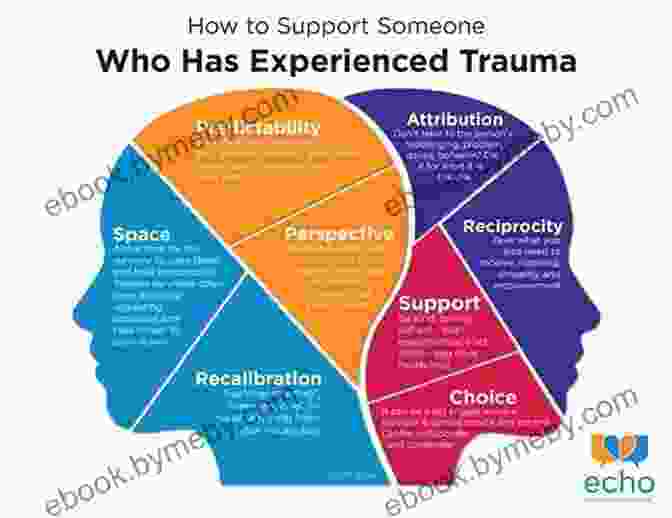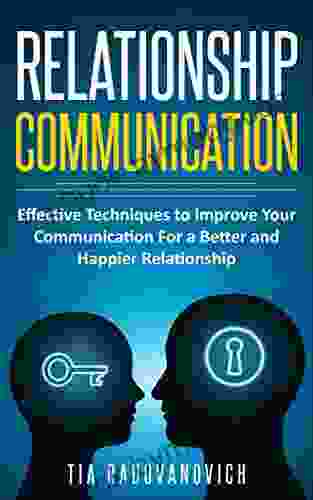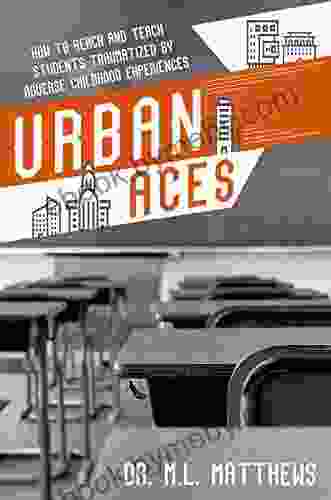How to Reach and Teach Students Traumatized by Adverse Childhood Experiences: An Essential Guide for Educators


Adverse childhood experiences (ACEs) are a serious public health problem that can have a devastating impact on children's lives. Research has shown that ACEs are linked to a wide range of negative outcomes in adulthood, including poor physical and mental health, risky behaviors, and social problems.
4.7 out of 5
| Language | : | English |
| File size | : | 654 KB |
| Text-to-Speech | : | Enabled |
| Screen Reader | : | Supported |
| Enhanced typesetting | : | Enabled |
| Word Wise | : | Enabled |
| Print length | : | 86 pages |
Unfortunately, many students who have experienced ACEs are not receiving the support they need to succeed in school. Traditional educational approaches often fail to take into account the unique needs of these students, and as a result, they may fall behind in their studies or even drop out of school altogether.
How to Reach and Teach Students Traumatized by Adverse Childhood Experiences is an essential guide for educators who want to help their students who have experienced ACEs succeed in school. This book provides a comprehensive overview of the impact of ACEs on students' learning and behavior, and it offers practical strategies for creating trauma-informed classrooms that support these students' needs.
What are ACEs?
ACEs are potentially traumatic events that occur in childhood. These events can include physical, emotional, or sexual abuse; neglect; witnessing violence; or living with someone who has mental illness or substance abuse problems.
Research has shown that ACEs are common: up to 67% of people in the United States have experienced at least one ACE, and 25% have experienced three or more. ACEs can have a profound impact on children's development, affecting their physical health, mental health, and social behavior.
Impact of ACEs on Students
ACEs can have a significant impact on students' learning and behavior. Students who have experienced ACEs are more likely to:
- Have difficulty paying attention and concentrating
- Behave aggressively or withdraw socially
- Experience anxiety and depression
- Have difficulty forming relationships
- Fall behind in their studies
- Drop out of school
The impact of ACEs on students can be compounded by the fact that these students often face other challenges, such as poverty, homelessness, and food insecurity. As a result, they may need additional support to succeed in school.
Trauma-Informed Education
Trauma-informed education is an approach to teaching that takes into account the impact of trauma on students' learning and behavior. This approach is based on the understanding that students who have experienced trauma may have different needs than other students, and it provides educators with strategies for meeting those needs.
Trauma-informed education includes the following key elements:
- Safety: Students need to feel safe and supported in their learning environment.
- Trust: Students need to be able to trust their teachers and other adults in the school community.
- Choice: Students need to have choices in their learning, and they need to feel like they have control over their own lives.
- Collaboration: Students need to work together with their teachers and other adults to create a positive learning environment.
- Empowerment: Students need to feel like they can make a difference in their own lives and in the world around them.
Trauma-informed education can help students who have experienced ACEs to succeed in school. By providing these students with the support they need to feel safe, supported, and respected, educators can help them to overcome the challenges they face and reach their full potential.
How to Create a Trauma-Informed Classroom
There are many things that educators can do to create trauma-informed classrooms. Some of these things include:
- Building relationships with students: Getting to know your students and understanding their individual needs is essential for creating a trauma-informed classroom.
- Creating a safe and supportive environment: Students need to feel safe and supported in Free Download to learn. This means creating a classroom environment that is free from violence, bullying, and other forms of trauma.
- Using trauma-informed teaching practices: There are a number of trauma-informed teaching practices that can help students to learn and succeed. These practices include using language that is respectful of students' experiences, providing students with choices, and giving students opportunities to share their stories.
- Collaborating with other professionals: Trauma-informed education is a team effort. Collaborating with other professionals, such as school counselors and social workers, can help you to provide students with the support they need.
- Taking care of yourself: Working with students who have experienced trauma can be challenging. It is important to take care of yourself and seek support when you need it.
Creating a trauma-informed classroom takes time and effort, but it is worth it. By providing students who have experienced ACEs with the support they need, educators can help them to overcome the challenges they face and reach their full potential.
ACEs are a serious public health problem that can have a devastating impact on children's lives. Students who have experienced ACEs often face challenges in school, and they may need additional support to succeed. Trauma-informed education is an approach to teaching that takes into account the impact of trauma on students' learning and behavior. By creating trauma-informed classrooms, educators can help students who have experienced ACEs to overcome the challenges they face and reach their full potential.
How to Reach and Teach Students Traumatized by Adverse Childhood Experiences is an essential guide for educators who want to help their students who have experienced ACEs succeed in school. This book provides a comprehensive overview of the impact of ACEs on students' learning and behavior, and it offers practical strategies for creating trauma-informed classrooms that support these students' needs.
If you are an educator who works with students who have experienced ACEs, I encourage you to read this book. It will provide you with the knowledge and skills you need to create a trauma-informed classroom that will help these students to succeed.
4.7 out of 5
| Language | : | English |
| File size | : | 654 KB |
| Text-to-Speech | : | Enabled |
| Screen Reader | : | Supported |
| Enhanced typesetting | : | Enabled |
| Word Wise | : | Enabled |
| Print length | : | 86 pages |
Do you want to contribute by writing guest posts on this blog?
Please contact us and send us a resume of previous articles that you have written.
 Book
Book Novel
Novel Page
Page Chapter
Chapter Text
Text Story
Story Genre
Genre Reader
Reader Library
Library Paperback
Paperback E-book
E-book Magazine
Magazine Newspaper
Newspaper Paragraph
Paragraph Sentence
Sentence Bookmark
Bookmark Shelf
Shelf Glossary
Glossary Bibliography
Bibliography Foreword
Foreword Preface
Preface Synopsis
Synopsis Annotation
Annotation Footnote
Footnote Manuscript
Manuscript Scroll
Scroll Codex
Codex Tome
Tome Bestseller
Bestseller Classics
Classics Library card
Library card Narrative
Narrative Biography
Biography Autobiography
Autobiography Memoir
Memoir Reference
Reference Encyclopedia
Encyclopedia K S Marsden
K S Marsden Write Blocked
Write Blocked Robert Gerstemeier
Robert Gerstemeier Tim R Swartz
Tim R Swartz V L Purvis Smith
V L Purvis Smith Mike Mattesi
Mike Mattesi Kami Garcia
Kami Garcia Kalle Rosenbaum
Kalle Rosenbaum Juliet David
Juliet David Leslie Blodgett
Leslie Blodgett Ken Bloom
Ken Bloom Keith Dunnavant
Keith Dunnavant Ruy Castro
Ruy Castro Shea Fontana
Shea Fontana Kathy Barnette
Kathy Barnette P J Hoover
P J Hoover Michael Ignatieff
Michael Ignatieff Sebastian Smee
Sebastian Smee Kamal Saleem
Kamal Saleem Robin Yocum
Robin Yocum
Light bulbAdvertise smarter! Our strategic ad space ensures maximum exposure. Reserve your spot today!

 Jaime MitchellThe Split History of Westward Expansion in the United States: Perspectives...
Jaime MitchellThe Split History of Westward Expansion in the United States: Perspectives... Wesley ReedFollow ·13.7k
Wesley ReedFollow ·13.7k Xavier BellFollow ·6.1k
Xavier BellFollow ·6.1k Gabriel BlairFollow ·18.3k
Gabriel BlairFollow ·18.3k Tyrone PowellFollow ·7.3k
Tyrone PowellFollow ·7.3k Braden WardFollow ·17.3k
Braden WardFollow ·17.3k Esteban CoxFollow ·8.8k
Esteban CoxFollow ·8.8k Hugh ReedFollow ·16.5k
Hugh ReedFollow ·16.5k Vernon BlairFollow ·2.2k
Vernon BlairFollow ·2.2k

 George Orwell
George OrwellPandemic with Dogs: Two Essays
By Susannah Charleson In the midst of...

 Leo Mitchell
Leo MitchellAdam Smith's The Wealth of Nations: A Classic Treatise on...
Adam Smith's The...

 Cade Simmons
Cade SimmonsUnlock Your Communication Potential: Effective Techniques...
Communication is a fundamental...

 Floyd Richardson
Floyd RichardsonFire and Ashes: Success and Failure in Politics
Fire and Ashes: Success and...

 Oliver Foster
Oliver FosterUnlock the Enchanting Mystery of Ken Follett's "The Key...
Embark on a captivating literary journey into...
4.7 out of 5
| Language | : | English |
| File size | : | 654 KB |
| Text-to-Speech | : | Enabled |
| Screen Reader | : | Supported |
| Enhanced typesetting | : | Enabled |
| Word Wise | : | Enabled |
| Print length | : | 86 pages |












